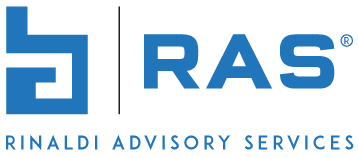The Equipment Leasing M&A Outlook for 2023
In this article for BankDirector.com I examine the outlook for Equipment Leasing M&A in 2023. With the current economic landscape, there’s no doubt that the Equipment Leasing industry is poised for growth and change. Drawing on 30 years of experience in the sector, I offer a comprehensive analysis of what to expect in 2023, including the key drivers of growth, challenges to watch out for, and opportunities for strategic M&A. Whether you lead a community bank or an equipment leasing company, this article provides valuable insights that can inform your decision-making and help you stay ahead of the curve.
The Equipment Leasing M&A Outlook for 2023
By: Bob Rinaldi

Fear, uncertainty and doubt are never harbingers of a good M&A environment. However, in my opinion, that is not the case as it relates to the equipment leasing and finance market.
In my 30-plus years of experience in the equipment finance sector, it’s always a good time for a bank buyer to purchase a solid equipment leasing and finance company as a way to enter the space. Generally, community banks’ commercial and industrial assets tend to be concentrated in real estate. Many community banks are also sitting on a lot of cash they are having trouble deploying into loans, especially non-commercial real estate C&I. By comparison, equipment finance companies are fantastic generators of C&I assets.
We’ve been involved in some recent transactions and projects during these less-than-ideal economic times. In early 2021, Marietta, Ohio-based Peoples Bancorp acquired North Star Leasing out of Vermont. In mid-2021, Indiana, Pennsylvania-based First Commonwealth Financial Corp. did a lift out of a team to start their foray into equipment finance. In mid-2022, Trustmark Corp. out of Jackson, Mississippi, launched a bank leasing business by hiring a well-known bank-owned equipment finance leader. Lastly, in the third quarter of 2022, New Orleans-based Gulf Coast Bank and Trust Co. acquired KLC Financial out of Minnetonka, Minnesota.
Each of these banks has a relatively small geographical footprint and acquired national leasing companies or platforms nowhere near their core markets. All were sitting on a great deal of cash and found equipment finance as one solution to effectively deploy those funds.
What does this mean for the future M&A market of equipment finance companies? The obvious headwinds for the space will be the continuation of the Federal Reserve’s tightened monetary policy, abnormal supply chain issues, elevated asset values and increasing interest rates to fight inflation. Fed governors are on record saying that the risk of recession is worth the price for reining in inflation.
Since equipment finance transactions have a short amortization period and each new transaction is reviewed based upon its own merits at the time of application, equipment leasing and finance companies adjust to conditions reasonably fast. Granted, some bank-owned competitors sometimes hold off raising rates longer than necessary; for them, it is a balancing act between needing C&I assets, their intrinsic cost of funds and their cash levels. Another thing that occurs during any period of uncertainty is that banks tend to pull in the reins on credit quality and lending in general, especially to small businesses.
The equipment leasing and finance business has all the attributes that make it appealing to potential bank buyers: The equipment finance industry does well in good times and very well in counter-cyclical times.
And generally speaking, it is always a good time for a bank to purchase a solid equipment finance company. There are roughly less than 700 independent leasing companies; there are roughly 4,800 banks in the U.S. of all sizes.
One of the key attributes of a “solid” leasing company is that it has a platform that is scalable. After all, the only reason for a bank to buy a leasing company is to scale it so it can put more of its assets to work generating larger spreads and stronger returns in this asset class, lifting the bank’s total spreads and return on assets. In every case, independent lessors are constrained by capital and the cost of capital that it can obtain. It is the exception for a bank acquisition of an equipment leasing company not to pan out as planned. Generally speaking, the actual results turn out well beyond what buyers expected going into the acquisition.
There are not many potential equipment leasing targets that are bank-ready at any moment in time; the same goes for banks that are prepared to purchase and succeed in a deal for an equipment leasing and finance company. We refer to those institutions that are ready as “equipment finance industry ready:” the prospective bank acquirer has done enough research and modeling of the equipment finance industry to understand what kind, size and equipment-type focus of equipment finance company would work best for them. That is, in fact, why banks engage advisors who have deep expertise in the whole equipment leasing and finance industry.
© 2023. This article originally appeared on BankDirector.com. All rights reserved.
